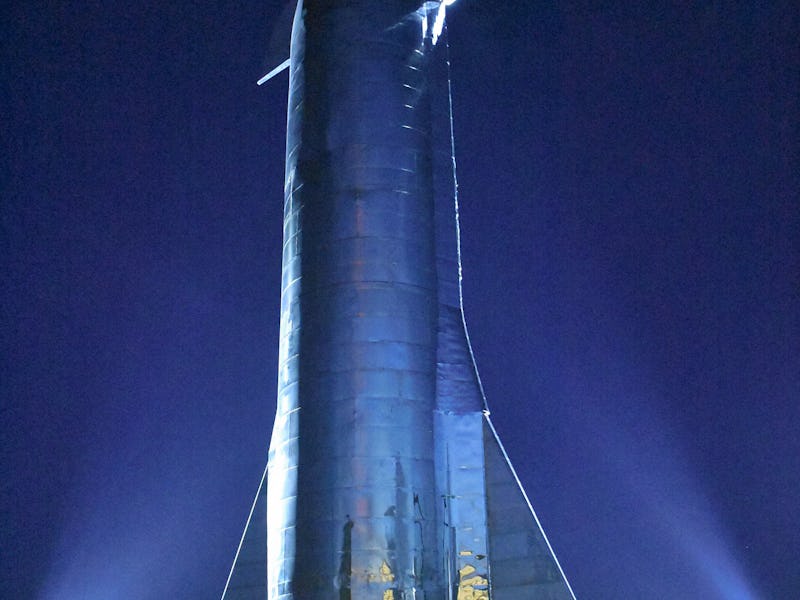SpaceX Starship user guide suggests it could offer more power than expected
Elon Musk's giant rocket looks set to bring a huge amount of power when it launches at SpaceX facilities.

How powerful is the SpaceX Starship? According to a user guide shared this week, it could be more powerful than expected.
The stainless steel rocket, currently under development at the firm's Boca Chica facility in Texas, has been touted as a means of sending around 150 tons or 100 people into space. Its fully reusable design and liquid oxygen and methane fuel make it ideal for manned missions to Mars and beyond, with plans to use the Starship to establish a city on Mars by 2050.
But the first version of the Starship Users Guide suggests it could pack more power than expected. Page five of the document outlines the expected performance. A discrepancy in the figures suggests it could push past the 150-ton mark for low-Earth orbit missions.
SpaceX's figures from the user guide.
The discrepancy was first spotted by Twitter user "Everyday Astronaut," real name Tim Dodd, who claimed Tuesday that SpaceX is "seriously underselling" the capability of the ship for low Earth orbit missions. That's because the table claims the Starship can lift 21 tons to geostationary transfer orbit. Dodd suggests that if we assume the ship has a dry mass (total mass minus propellant) of 120 tons, and a specific impulse of 380, that would suggest the ship can lift 156 tons to low Earth orbit.
That, Dodd reasons, leaves three possibilities. The dry mass is less than assumed, which would be an improvement over the figure Musk himself shared in September 2019. The specific impulse could be more, which would improve on Musk's February 2019 aspirational figures. The third option is the ship will indeed send around 156 tons to low Earth orbit – just a bit more than the weight of a house.
Responding to Dodd's figures, Musk suggested this was an accurate summary.
"Mass of initial SN ships will be a little high & Isp a little low, but, over time, it will be ~150t to LEO fully reusable," he wrote.
Starship is expected to form the focal point of a number of SpaceX's future missions. When Musk first unveiled the ship under the name "BFR" in September 2017, he explained that it's designed to replace other vehicles like the Falcon 9, Falcon Heavy and Dragon capsule. Musk appeared to reiterate this ambition this week when he suggested the Starship could take on NASA-related resupply missions after enough flights had been completed.
The ship has undergone numerous improvements over the past two years. It's switched to a stainless steel design, explored a transpiration cooling system, and looked into tweaks to the ship's legs. A miniaturized version of the ship dubbed "Starhopper" flew 150 meters into the air in August 2019, and since then the team has been building full-size prototypes of the next vehicle. Musk stated last month that the design is "rapidly evolving."
Recent reports suggest the company is gearing up to fly the full-size prototype for the first time this month. Beach closure documents suggested the firm would be aiming to complete a static test fire of the ship sometime between April 1 to 3, followed by a hop of 150 meters April 6 to 8. Musk has previously claimed that the "SN3" prototype, completed last month, could be a candidate for the first full-size hop. Its successor, "SN4," would be designed to support even longer flights.
As the company aims to fly its first commercial Starship flight as early as 2021, and a manned mission around the moon with Japanese billionaire Yusaku Maezawa sometime in 2023, it could be the official start of a bold new era for SpaceX.